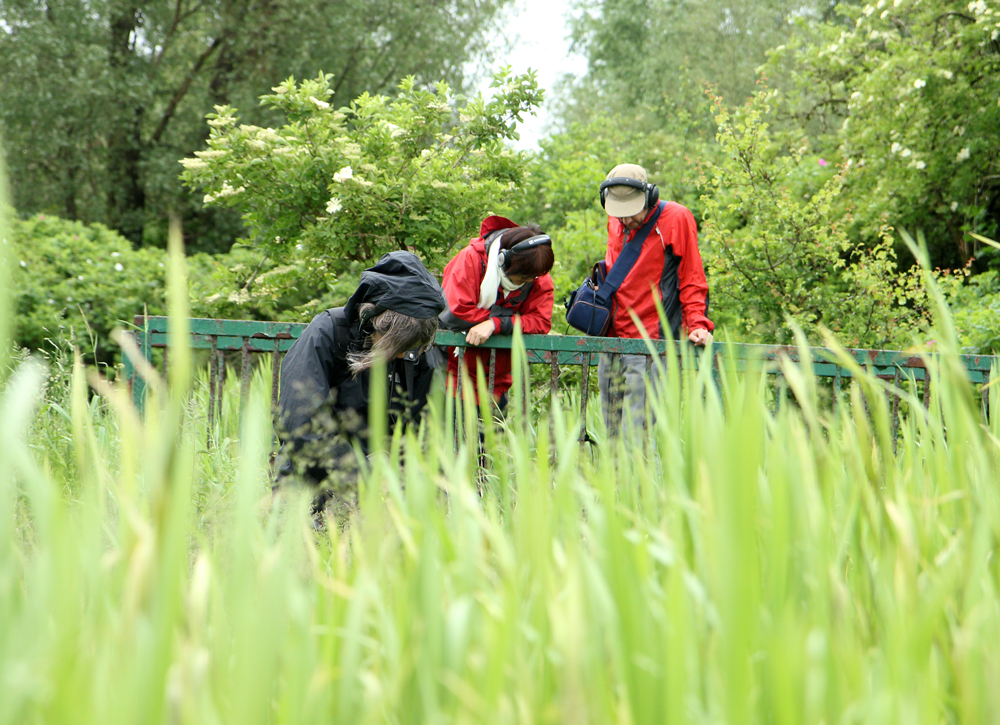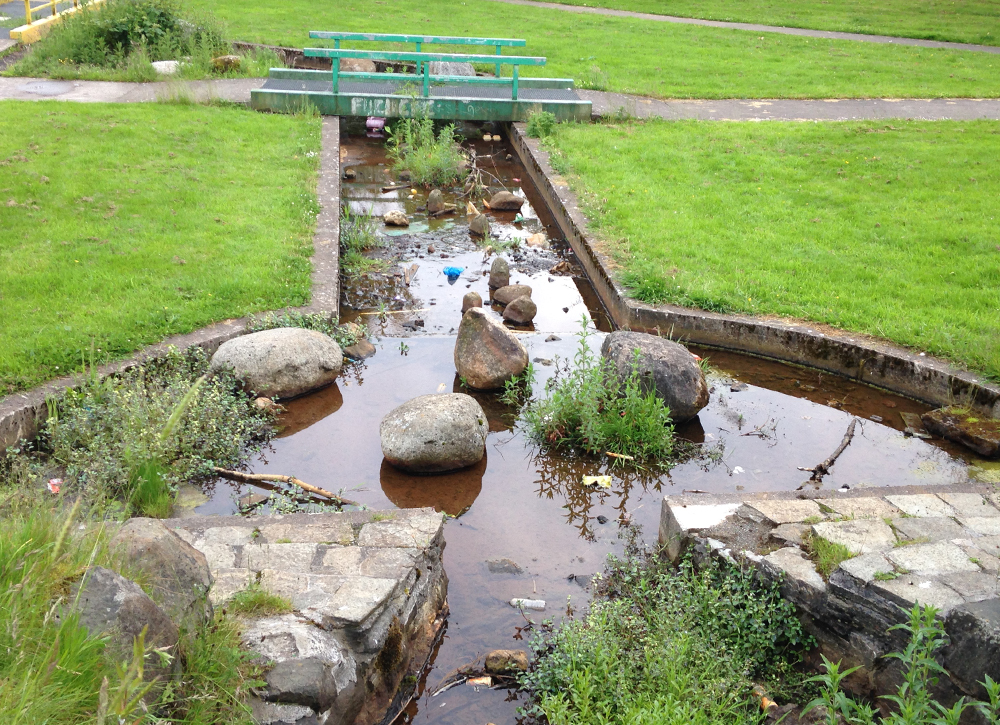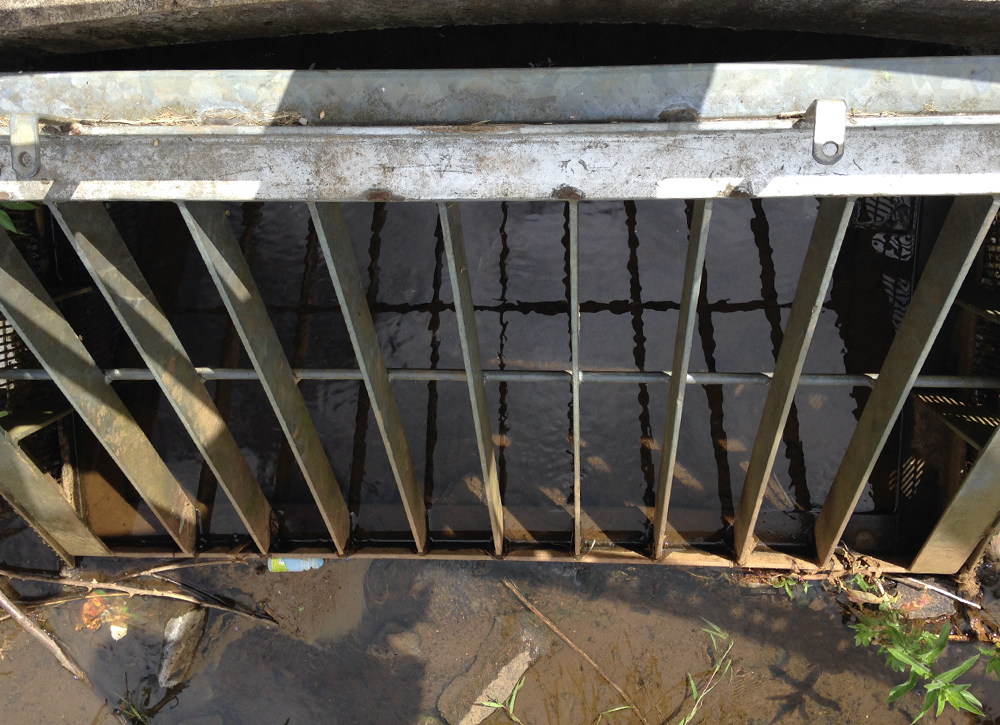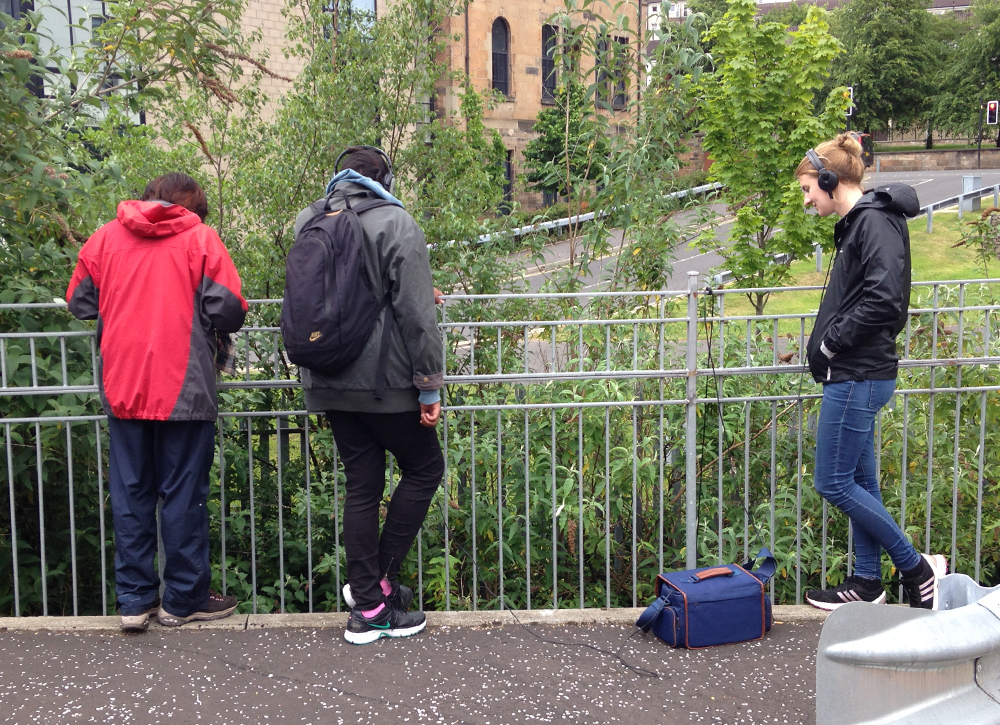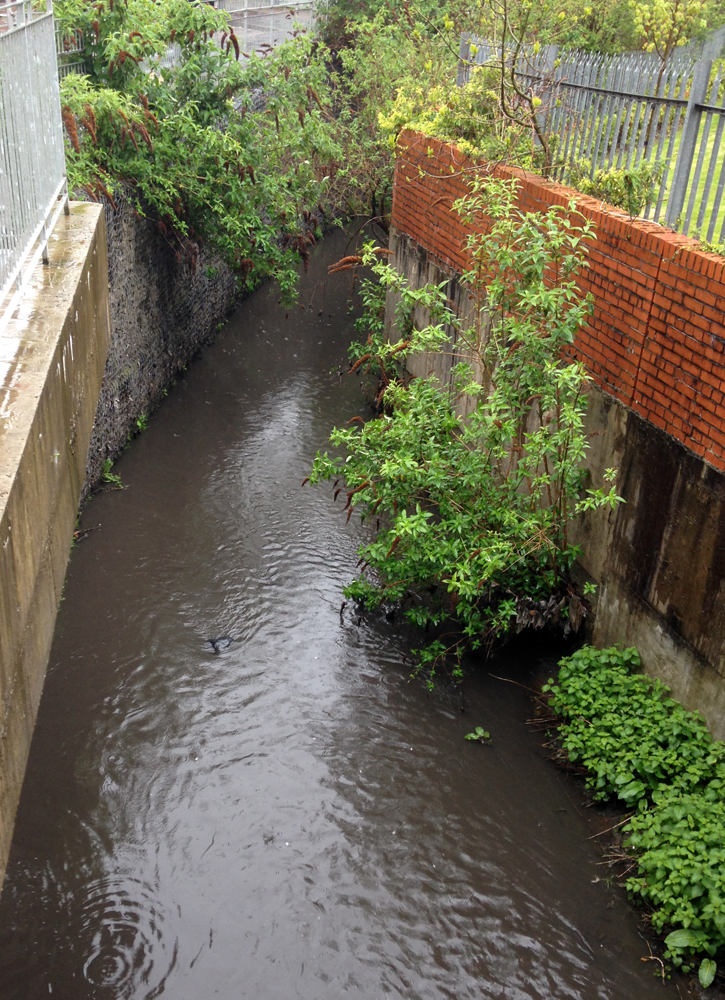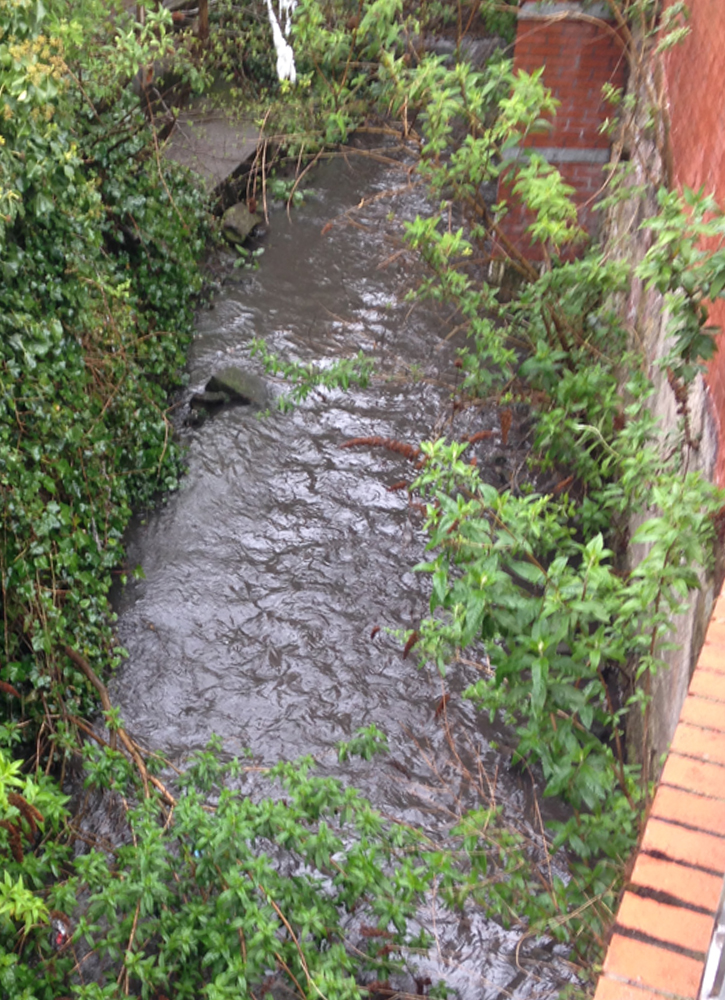Today we went to explore the Molendinar burn, which flows from Frankfield Loch right through the city centre of Glasgow and into the Clyde. The interesting thing about the Molendinar Burn is that it is along its very banks that the city of medieval Glasgow first began. The name ‘Molendinar’ means ‘Mill-burn’ referring to the water mills that originated there. Towards the end of the 19th Century, the Molendinar Burn was culverted and to this day, almost all of the burn runs underneath the city – hidden from view … perhaps forgotten. There are small parts of it that are still visible and accessible – so these are the parts we sought out to record with our hydrophones. It was exciting to study maps to find and follow the route of the Molendinar Burn.
Starting at Hogganfield Loch, we found a small pond within which we could carry out the OPAL Water Survey. The pond scored highly and was full of life, including the discovery of more than one cased caddisfly larvae which can only survive in very healthy ponds. The pond played host to some amazing sounds ranging from textures comparable to the sound of sizzling bacon to clicking and buzzing that could easily be mistaken for an analogue synthesiser, the loudest of which could be attributed to the water boatmen perhaps? Here are a few pond sounds to enjoy…
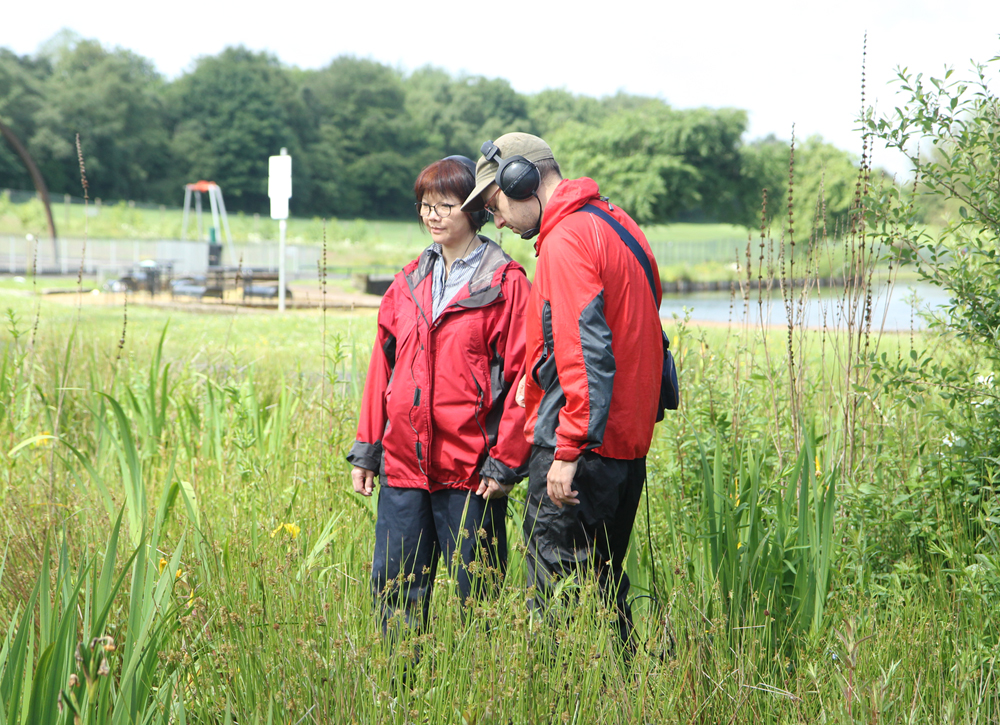
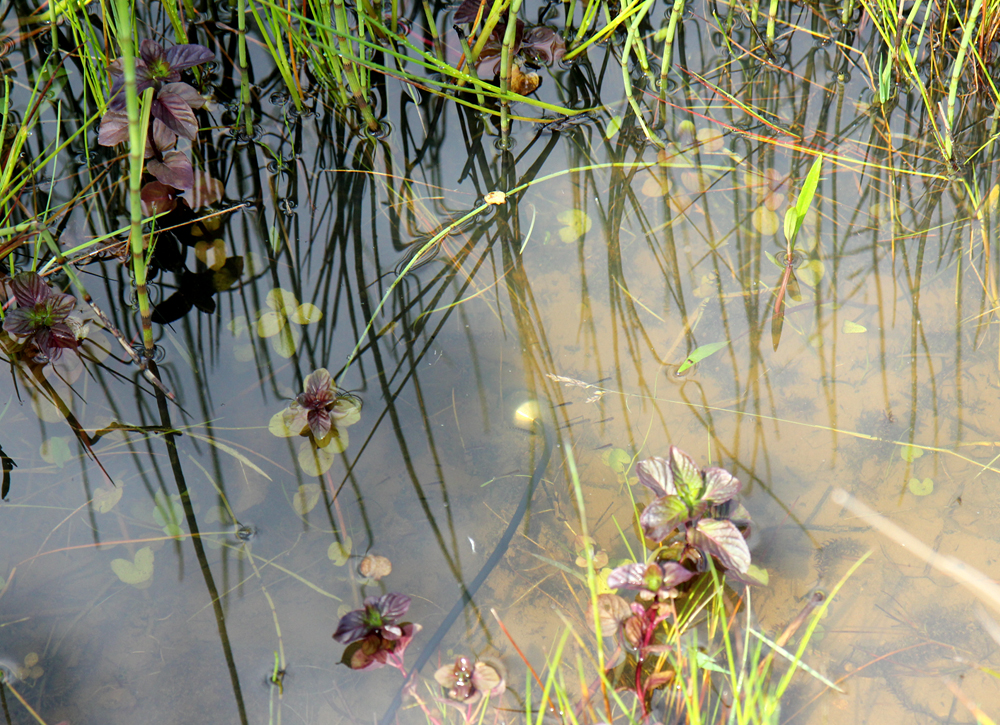 The next part of the Molendinar across the road to Hogganfield loch was completely dried up… couldn’t be more hidden… so we headed through Riddrie Park cemetery to find the next open section.
The next part of the Molendinar across the road to Hogganfield loch was completely dried up… couldn’t be more hidden… so we headed through Riddrie Park cemetery to find the next open section.

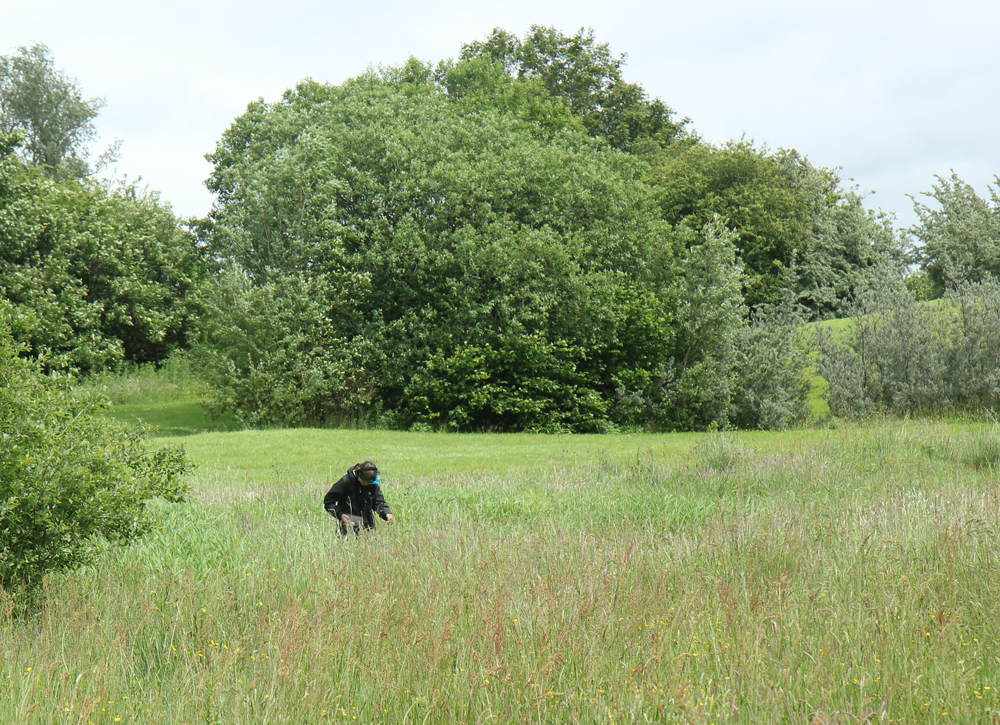 Here, the Molendinar was quite shallow, but at least in existence, but only for about 200m before it disappeared underground again through another culvert…
Here, the Molendinar was quite shallow, but at least in existence, but only for about 200m before it disappeared underground again through another culvert…
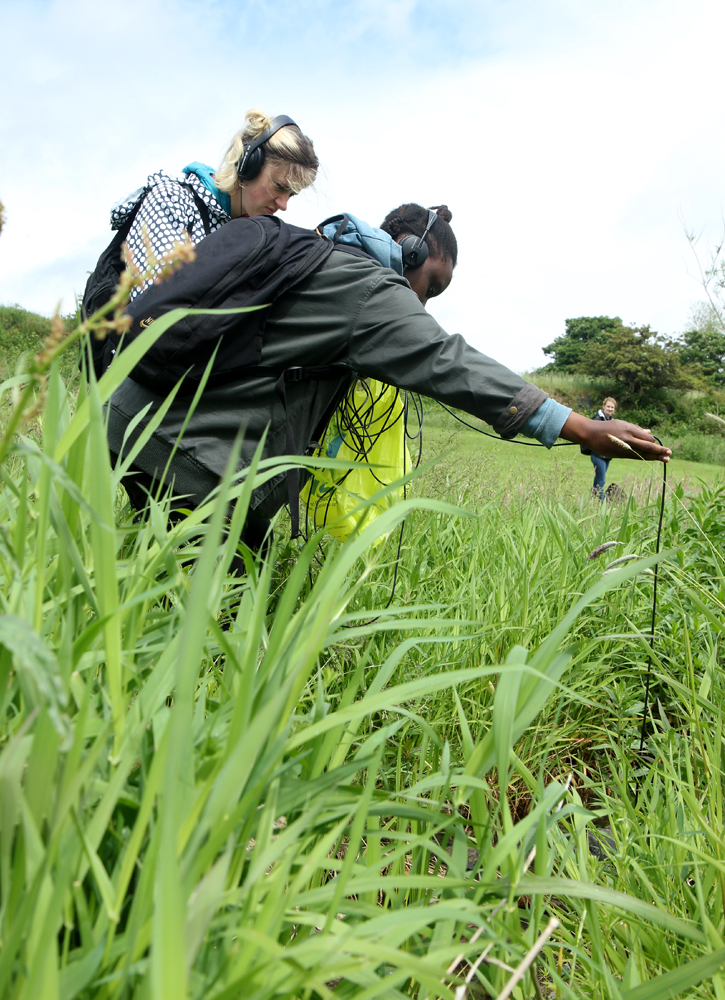
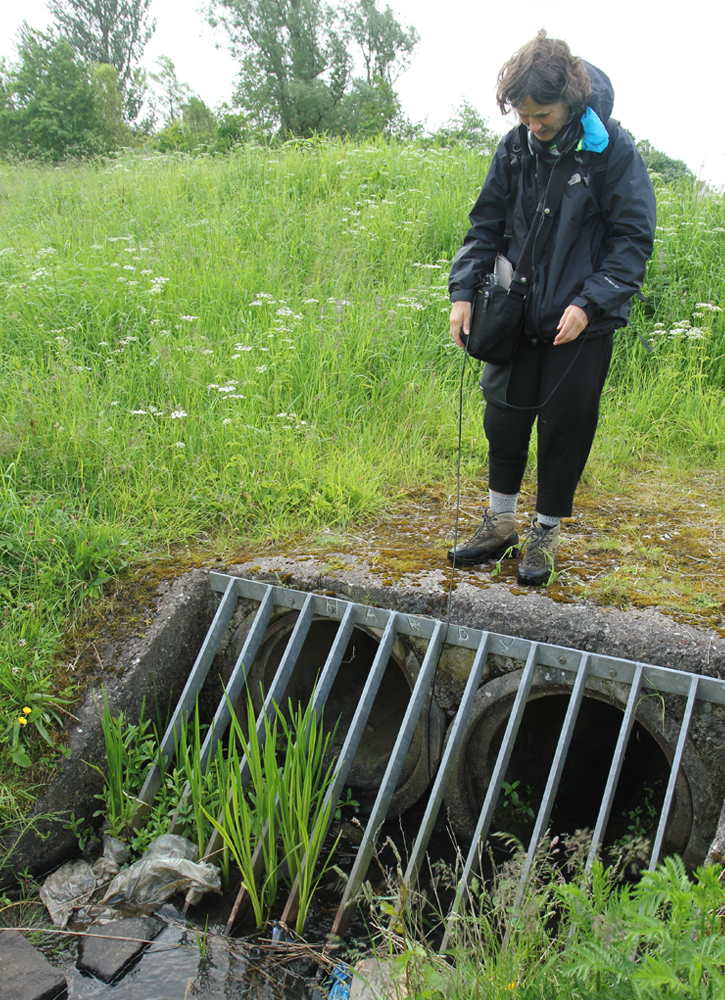 We then took another 10 minute walk to a small park in Craighead Avenue where we were greeted by a Molendinar waterfall!… albeit not a very substantial waterfall… more like a slight trickle.
We then took another 10 minute walk to a small park in Craighead Avenue where we were greeted by a Molendinar waterfall!… albeit not a very substantial waterfall… more like a slight trickle.
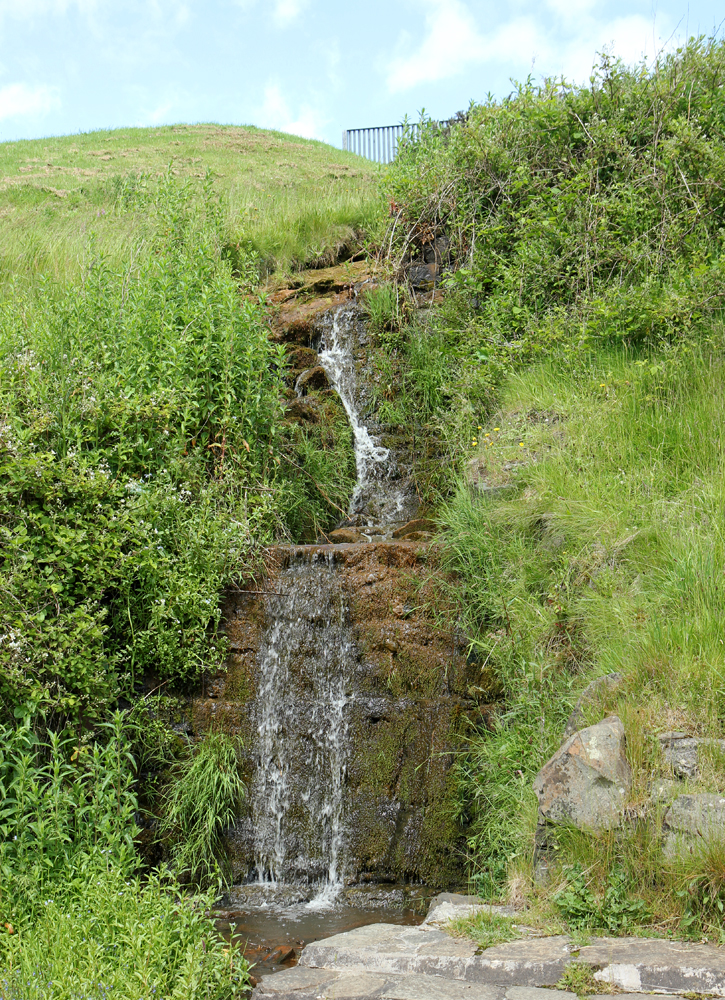
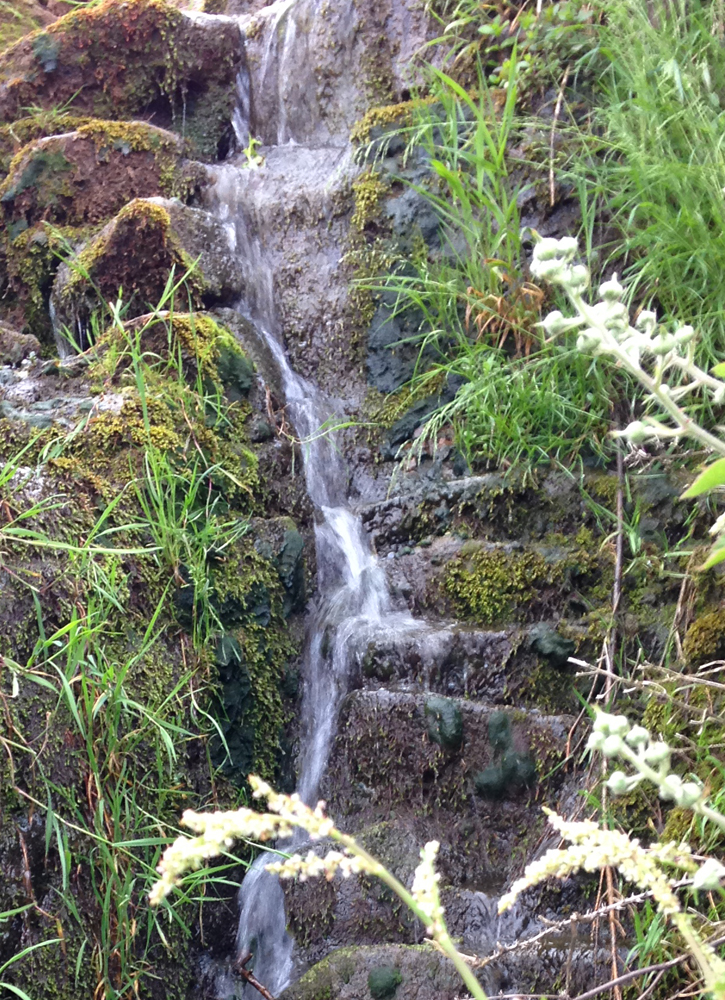 … which made for some pleasant water-trickling listening and recording, before the Molendinar wove its way through a slightly depressing, badly maintained park, to then take its final dive underground back into a culvert for its longest winding route underground yet…
… which made for some pleasant water-trickling listening and recording, before the Molendinar wove its way through a slightly depressing, badly maintained park, to then take its final dive underground back into a culvert for its longest winding route underground yet…
… it didn’t reappear for approximately 3 miles, and then only for a very short interlude, just behind the Great Eastern Hotel on Duke street. At this point we were grateful for the 9 meter cables on our hydrophones…
